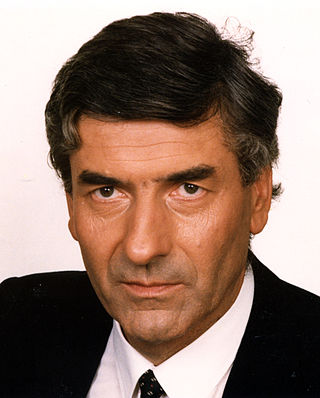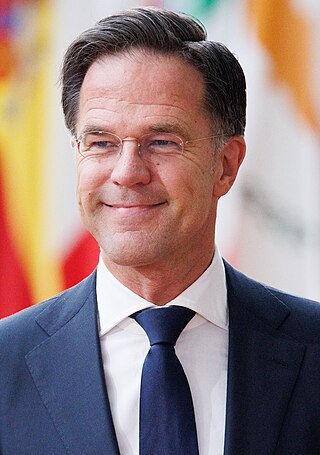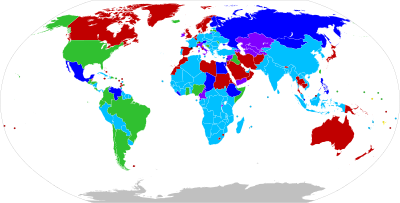In the executive branch, the head of government is the highest or the second-highest official of a sovereign state, a federated state, or a self-governing colony, autonomous region, or other government who often presides over a cabinet, a group of ministers or secretaries who lead executive departments.

The politics of the Netherlands take place within the framework of a parliamentary representative democracy. A constitutional monarchy, the country is organised as a decentralised unitary state. The Netherlands can be described as a consociational state. Dutch politics and governance are characterised by a common striving for broad consensus on important issues, within both of the political community and society as a whole.

Jan Pieter "Jan Peter" Balkenende Jr. is a Dutch politician of the Christian Democratic Appeal (CDA) party and jurist who served as Prime Minister of the Netherlands from 22 July 2002 to 14 October 2010.

Rudolphus Franciscus Marie "Ruud" Lubbers was a Dutch politician, diplomat and businessman who served as Prime Minister of the Netherlands from 1982 to 1994, and as United Nations High Commissioner for Refugees from 2001 to 2005. He was a member of the Catholic People's Party (KVP), which later merged to become the Christian Democratic Appeal (CDA) party.
A term limit is a legal restriction on the number of terms a person may serve in a particular elected office. When term limits are found in presidential and semi-presidential systems they act as a method of curbing the potential for monopoly, where a leader effectively becomes "president for life". This is intended to protect a republic from becoming a de facto dictatorship. Term limits may be a lifetime limit on the number of terms an officeholder may serve, or a limit on the number of consecutive terms.
A fixed-term election is an election that occurs on a set date, and cannot be changed by incumbent politicians other than through exceptional mechanisms if at all. The office holder generally takes office for a set amount of time, and their term of office or mandate ends automatically.

Mark Rutte is a Dutch politician who has served as Prime Minister of the Netherlands since 2010. He is currently acting in a demissionary capacity, scheduled to leave national politics following the installation of the next cabinet after the 2023 general election. Rutte was the leader of the People's Party for Freedom and Democracy (VVD) from 2006 through 2023. On 2 August 2022 he became the longest-serving prime minister in the history of the Netherlands.

The minister of foreign affairs is the head of the Ministry of Foreign Affairs and a member of the Cabinet and the Council of Ministers. The incumbent minister is Hanke Bruins Slot of the Christian Democratic Appeal (CDA) who has been in office since 5 September 2023. Regularly, a state secretary is assigned to the ministry who is tasked with specific portfolios, currently the function is not in use. Additionally since 1965 there has been a minister without portfolio assigned to the ministry, the minister for foreign trade and development cooperation has traditionally development cooperation as portfolio, since 2012 the portfolio of trade and export has been assigned added to the function. The current minister for foreign trade and development cooperation is Liesje Schreinemacher of the People's Party for Freedom and Democracy (VVD) who has been in office since 1 September 2023.
In a governmental system, a party leader acts as the official representative of their political party, either to a legislature or to the electorate. Depending on the country, the individual colloquially referred to as the "leader" of a political party may officially be party chair, secretary, or the highest political office.

A demissionary cabinet is a type of caretaker cabinet or provisional government in the Netherlands.
In the Netherlands, a Minister without portfolio is a Government minister that does not head a specific ministry, but assumes the same power and responsibilities as a minister that does. The minister is responsible for a specific part of another minister's policy field. In that sense, a minister without portfolio is comparable to a State Secretary (staatssecretaris), a junior minister in Dutch politics, who also falls under another ministry and is responsible for a specific part of that minister's policy field. However, one distinct difference is that a minister without portfolio is a member of the Council of Ministers and can vote in it, whereas a state secretary is not. The minister for development cooperation has always been a minister without portfolio.







